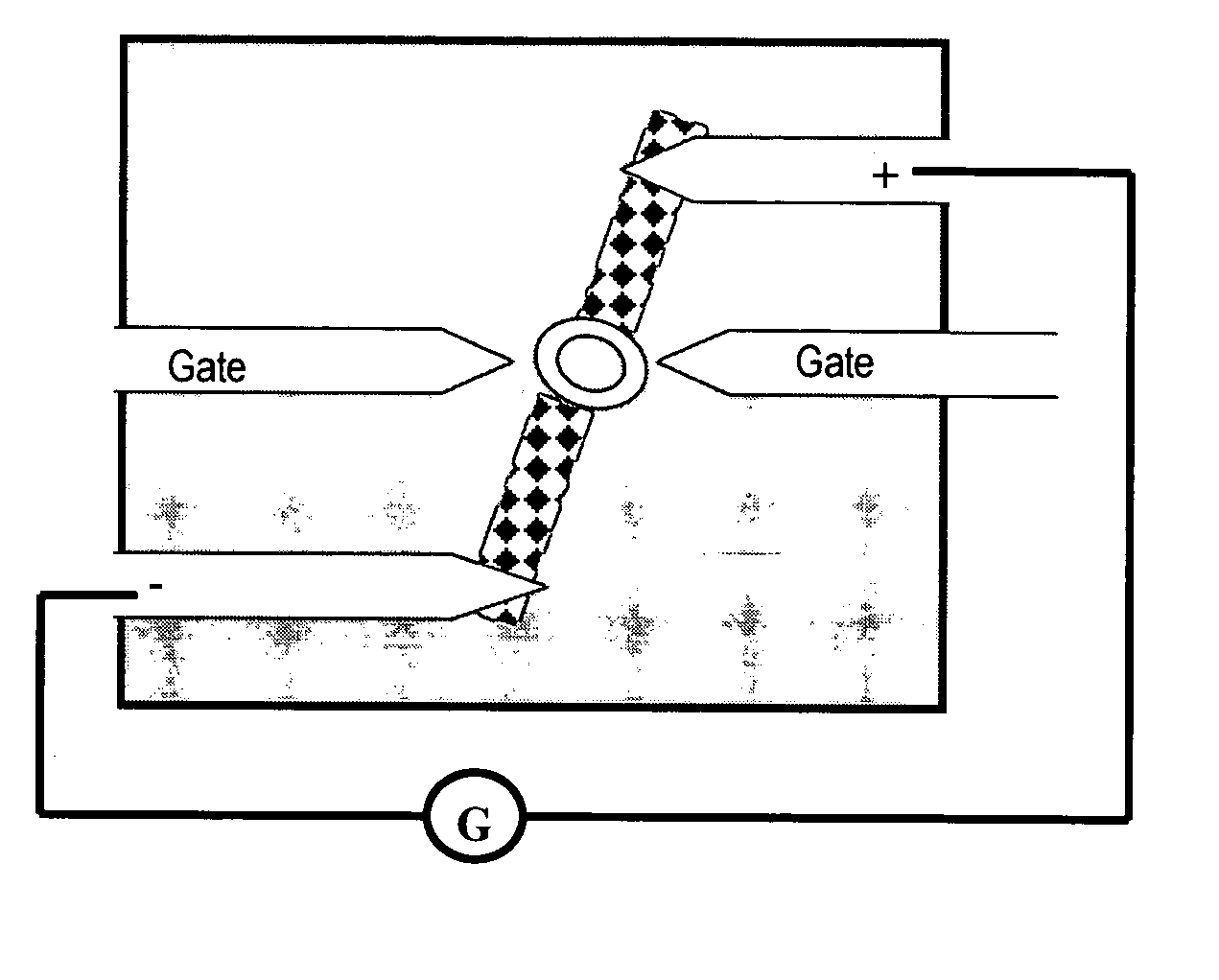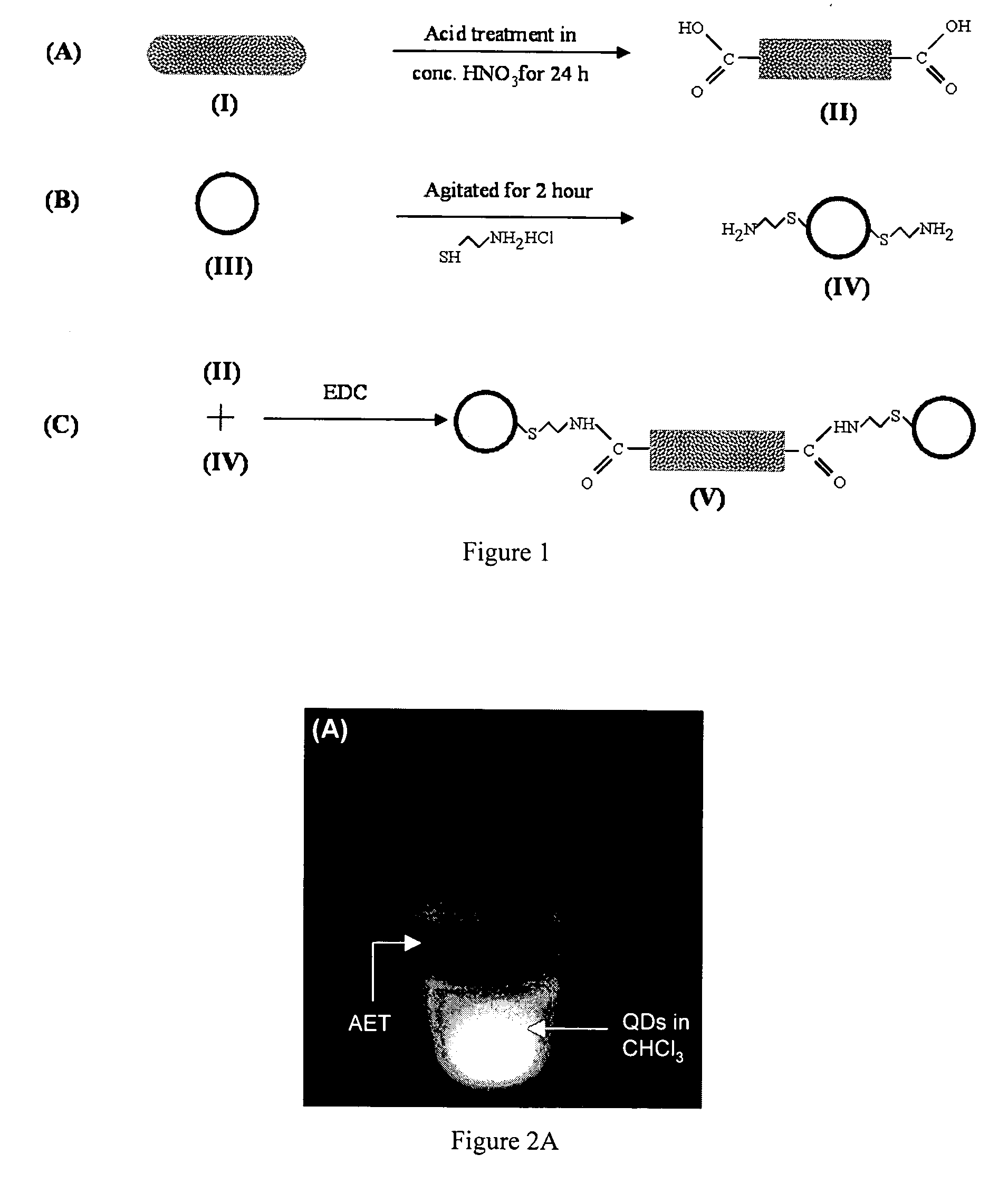Nanoscale heterojunctions and methods of making and using thereof
a technology of nanotubes and heterojunctions, applied in nanoinformatics, instruments, solid-state devices, etc., can solve the problems of reducing the electrical conductance of nanotube systems, introducing local bending, and limited control over the electrical properties of devices
- Summary
- Abstract
- Description
- Claims
- Application Information
AI Technical Summary
Benefits of technology
Problems solved by technology
Method used
Image
Examples
Embodiment Construction
[0050] The present invention provides heterojunctions and making and using thereof. In preferred embodiments, the heterojunctions are quantum dot (CNT-QD) heterojunctions. The present invention provides methods of making the CNT-QD heterojunctions, and nanodevices comprising the CNT-QD heterojunctions.
[0051] The present invention provides methods for making heterojunctions such as carbon nanotube-quantum dot (CNT-QD) heterojunctions which comprises using an ethylene carbodiimide coupling (EDC) procedure. In preferred embodiments, the present invention provides methods for the controlled synthesis of making the CNT-QD heterojunctions. The carbon nanotubes (CNTs) may be single-walled carbon nanotubes (SWCNTs) or multi-walled carbon nanotubes (MWCNTs). As used herein, CNT is used to refer to SWCNTs, MWCNTs, or both. The CNTs of the CNT-QD heterojunctions may be all SWCNTs, all MWCNT, or a mixture of both. The CNT-QD heterojunctions of the present invention may be used to connect, atta...
PUM
| Property | Measurement | Unit |
|---|---|---|
| length | aaaaa | aaaaa |
| length | aaaaa | aaaaa |
| length | aaaaa | aaaaa |
Abstract
Description
Claims
Application Information
 Login to View More
Login to View More - R&D
- Intellectual Property
- Life Sciences
- Materials
- Tech Scout
- Unparalleled Data Quality
- Higher Quality Content
- 60% Fewer Hallucinations
Browse by: Latest US Patents, China's latest patents, Technical Efficacy Thesaurus, Application Domain, Technology Topic, Popular Technical Reports.
© 2025 PatSnap. All rights reserved.Legal|Privacy policy|Modern Slavery Act Transparency Statement|Sitemap|About US| Contact US: help@patsnap.com



